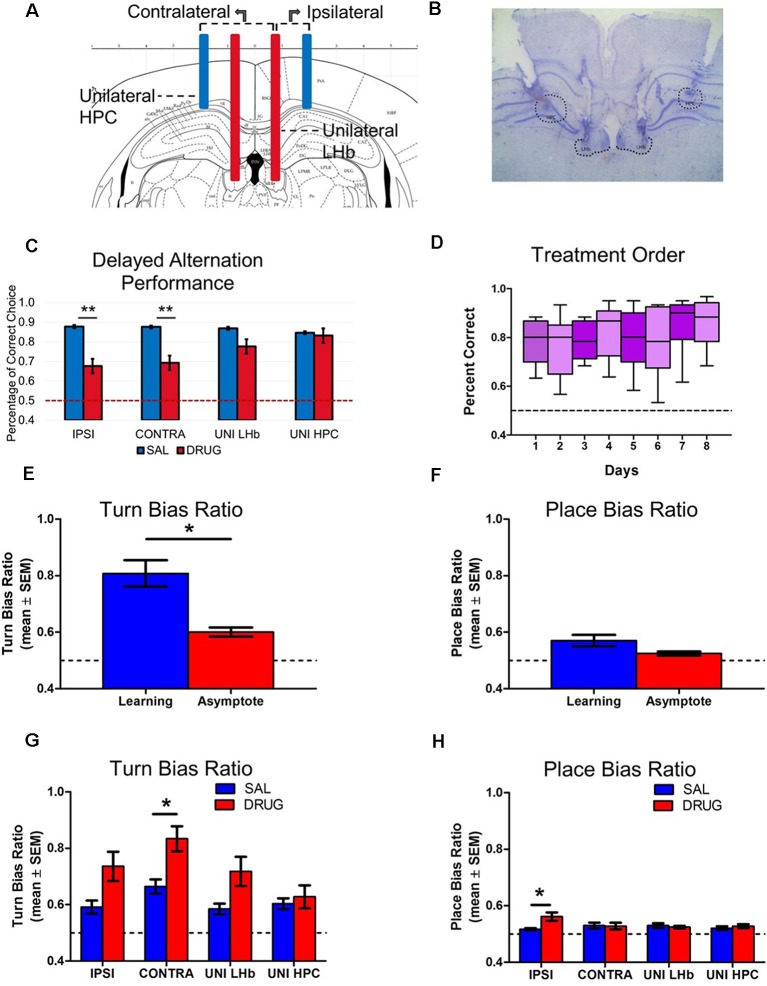Figure 4.
Experiment 2: LHb and HPC disconnection decreases accuracy in a delayed-alternation task. (A) Schematic of ipsilateral, contralateral and unilateral infusion cannula placements within HPC and LHb. (B) Histological example of cannula placements in the HPC and LHb. (C) Any treatment group that impaired both the LHb and HPC showed significant impairments in accuracy (F(3,32) = 5.83, p < 0.05). (D) Results revealed no effect of day of injection on overall accuracy on the delayed alternation task (F(7,64) = 0.89, ns.). (E) Egocentric turn bias significantly decreased from the Learning phase (0.81 ± 0.04) to Asymptote phase (0.60 ± 0.02; t(8) = 5.12, p < 0.01). (F) The place bias remained at a relatively low level in both Learning and Asymptote phases (Learning = 0.57 ± 0.02, Asymptote = 0.52 ± 0.01) and did not significantly differ from each other (t(8) = 1.78, ns.). (G) A two-way ANOVA of turn bias scores during asymptotic performance revealed main effects of both drug treatment (F(1,32) = 17.91, p < 0.01), and injection condition (F(3,32) = 13.72, p < 0.01), with no interaction effect (F(3,32) = 4.39, ns.). Bonferroni post hoc tests indicated that there was a significant difference between saline and drug treatment in the contralateral disconnection group (t(8) = 3.03, p < 0.05). (H) A two-way ANOVA of place bias scores did not show main effects for either drug treatment (F(1,32) = 2.86, ns.) or treatment area (F(3,32) = 1.06, ns.) but did reveal a significant interaction (F(3,32) = 3.03, p < 0.05). Bonferroni post hoc tests indicated that the ipsilateral disconnection group significantly increased place bias scores under drug vs. saline treatment, (t(8) = 3.38, p < 0.01). *p < 0.05. **p < 0.01. ns = not significant.

